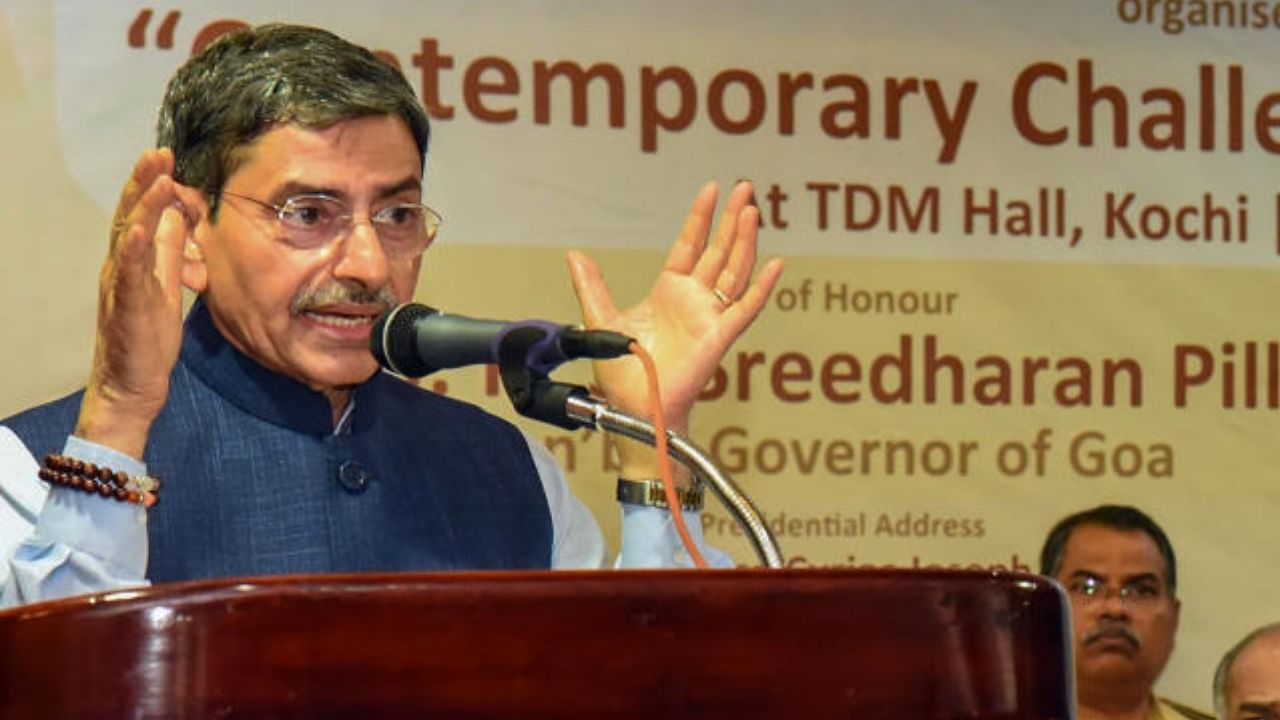
Even as the dust over his walking out in a huff from the Assembly yet to settle down, Tamil Nadu Governor R N Ravi has stoked yet another controversy by replacing the state government’s emblem with that of the Union Government in invitations sent out for Pongal celebrations at the Raj Bhavan.
The Tamil invitations, sent out to VVIPs and other dignitaries, also address Ravi as “Tamizhaga Aalunar” (Governor) instead of the standard “Tamil Nadu Aalunar.” However, the English version calls him the Tamil Nadu Governor.
The change in parlance in Tamil and skipping the state emblem is a significant development as the invitations sent out to dignitaries in 2022 for a tea party on the occasion of Tamil New Year’s Day referred to Ravi as Tamil Nadu Aalunar (Governor). It also has the state symbol which is the gopuram (tower) of Andal Temple in Srivilliputhur.
The development comes days after Ravi told a meeting that Tamizhagam was a more appropriate name for the state than Tamil Nadu, inviting criticism from almost all political parties, including AIADMK, BJP’s ally.
CPI-M MP from Madurai and Sahitya Akademi award winning author Su Venkatesan shared photos of the 2022 and 2023 invitations sent to him by the Raj Bhavan on Twitter and pointed out that this year’s invite only has the emblem of the Union Government.
“He (Governor Ravi) has refused to use the state symbol because the name Tamil Nadu is part of it. Likewise, shall we expect that the Governor will vacate his rented accommodation (Raj Bhavan) and leave Tamil Nadu?” Venkatesan asked.
During the swearing-in ceremony of Udhayanidhi Stalin as minister on December 14, the Governor’s office had used emblems of the state and Union governments. The Pongal invitation issue also had its resonance in social media with many asking the Governor to leave the state if he doesn’t like to use the name Tamil Nadu.
Though it is a widely used parlance, there has always been opposition to the suggestion that the state should be renamed as Tamizhagam from Tamil Nadu. Governor Ravi almost toed the BJP’s line on this issue as the party has always felt the literal translation of the word nadu which means country will lead to secessionist tendency among people of the state.
However, the proponents of Tamil Nadu say the name reflects the geographical area of the homeland of Tamils and in no way means that it is a separate country. They also recalled late Chief Minister C N Annadurai’s speech in the Assembly in 1967 in which he said, “Tamil Nadu is a state which is part of India. It is not an independent country because of the name.”
The demand to rename the then Madras state first surfaced in the 1950s after states were reorganized on linguistic basis and was vociferously raised after a Congressman from Virudhunagar, Sankaralinganar, died in October 1956. He died after fasting for three months demanding renaming of the Madras state.
The then fledgling DMK, which was occupying the opposition benches, moved a resolution in the Assembly on May 7, 1957, demanding that Madras be renamed as Tamil Nadu. However, the resolution was defeated as only 42 members voted in favour with the then Chief Minister K Kamaraj opposing the move and his Congress MLAs voting against it.
Despite several attempts by DMK and other parties, the resolution could not be passed in the Assembly due to Congress’ steadfast opposition to renaming of the Madras state. But the DMK’s emphatic victory in 1967 overthrowing the Congress, made Tamil Nadu a reality.
Annadurai moved a resolution in the assembly on July 18, 1967, proposing renaming of Madras state as Tamil Nadu, and his speech by uttering Tamil Nadu thrice on the floor of the House. The resolution was passed, and Tamil Nadu came into being on January 14, 1968.